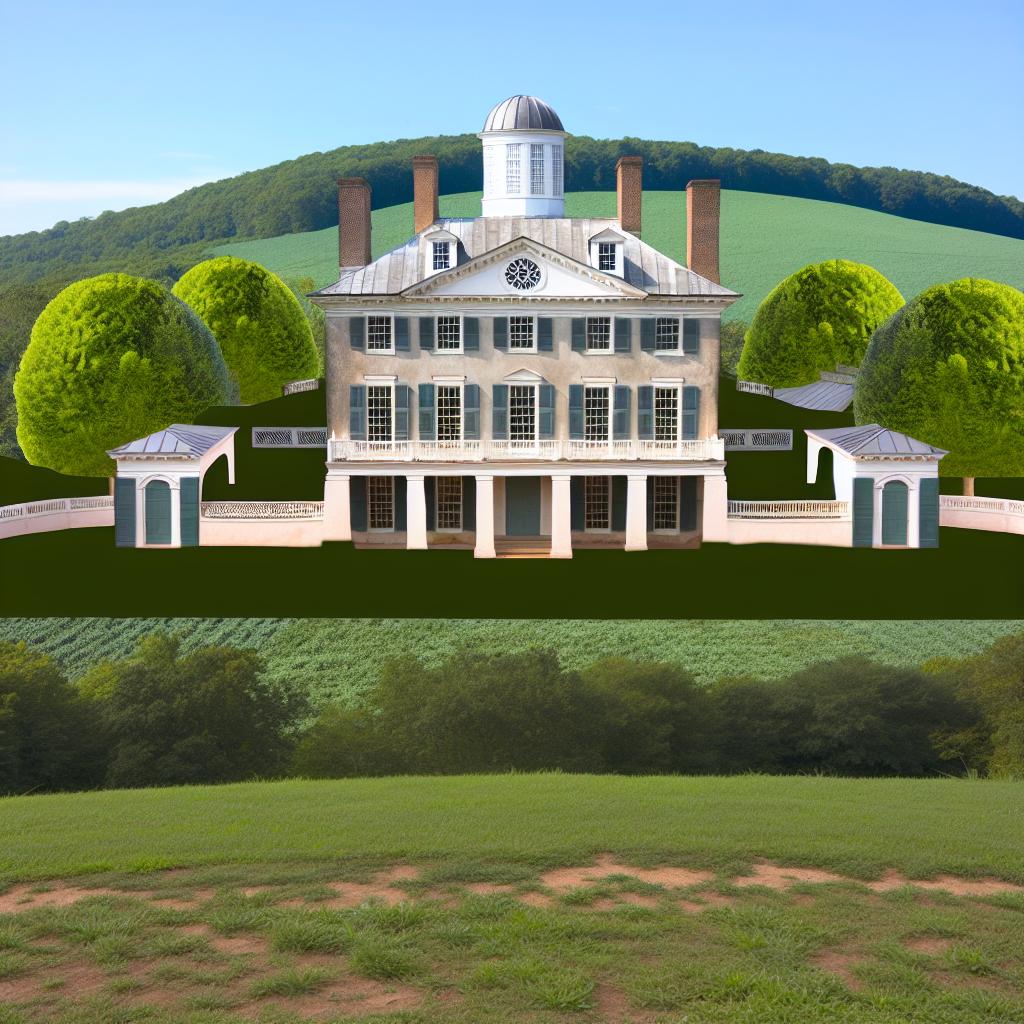Contents
Introduction
Monticello, the plantation home profoundly conceived and inhabited by Thomas Jefferson, offers a unique window into the United States’ formative years. Situated in the rolling hills of Charlottesville, Virginia, this architectural marvel is a cornerstone not only due to its association with Jefferson but also because of its broader significance to American history and culture. The estate is a mirror reflecting the complexities and contradictions of early American life, embodying the ideals of freedom while concurrently pointing to the enduring realities of slavery.
Architectural Design
Thomas Jefferson, a visionary figure in American history, was not just the third President of the United States and the principal author of the Declaration of Independence, but also a passionate advocate for architecture. His expertise and enthusiasm are immortalized in Monticello, which stands as a beacon of neoclassical architectural excellence. This design philosophy borrows heavily from ancient Roman and Greek inspirations, capturing the symmetry, balance, and order that these classical civilizations revered.
Jefferson’s Monticello is laden with Palladian style, named after the Renaissance architect Andrea Palladio. This style is characterized by its symmetry, perspective, and the use of classical forms, such as columns and pediments, which Jefferson believed represented democratic ideals and the pursuit of personal and societal improvement. For those interested in a journey through these architectural styles, an exploration of the Architectural Style Guide could be enlightening.
Cultural and Historic Significance
As a UNESCO World Heritage Site, Monticello’s global significance is indisputable. It embodies Jefferson’s enduring influence within the American narrative, capturing both his substantial contributions to the United States’ founding and the underlying complexities regarding slavery. Though Jefferson advocated for liberty and the pursuit of happiness, his lifelong ownership of enslaved people who worked and lived at Monticello lays bare the profound contradictions in his personal and public lives.
Jefferson’s Experimentation and Innovation
Driven by relentless curiosity, Thomas Jefferson used Monticello as a canvas for experimentation and innovation. His estate became a hub of forward-thinking agricultural practices, with techniques such as crop rotation reflecting his desire to enhance productivity while maintaining environmental balance. Beyond the fields, within the house itself, Jefferson’s promise of innovation is evident. He invented the Great Clock, a mechanical masterpiece that not only told time but also exemplified his inclination towards merging practicality with elegant design. An early version of a copying machine found in his study underscores his commitment to efficiency and ingenuity.
Legacy of Slavery
The story of Monticello is intrinsically tied to the paradox of Jefferson’s relationship with slavery. Although he eloquently articulated ideals of freedom and equality, these principles were entwined with the reality that his plantation was deeply reliant on enslaved labor. Among these individuals was Sally Hemings, with whom Jefferson had a complex relationship. This facet of Monticello’s history adds layers to Jefferson’s legacy, challenging simplistic notions of his contributions and narrating a more nuanced tale of those who lived in servitude at Monticello. Rigorous historical research and foundational oral histories have deepened our understanding of this history, helping uncover the multifaceted experiences of its enslaved community.
Educational and Public Engagement
Today, Monticello is a vibrant educational hub, continually enlightening visitors about the richness of early American life, the breadth of Jefferson’s contributions, and the harsh realities faced by the plantation’s enslaved population. The estate offers a range of educational programs, striving to deepen and broaden the public’s understanding of American history. Monticello continues to play a pivotal role in fostering public dialogue and reflection on the complexities of the American story, and for further exploration of its contemporary educational initiatives, you can visit Monticello.
Conclusion
In sum, Monticello endures as a potent emblem of America’s inception, weaving together the saga of one of the nation’s most impactful figures with the intricate societal complexities of his era. Its preservation offers a valuable opportunity for ongoing exploration and reevaluation of what it means to be American. This historical landmark serves as both a reminder and a tool, compelling us to confront the legacies of the past while encouraging continuous reflection and learning in the present. As Monticello stands tall, it remains not just a relic of history but a beacon for understanding the past and its impact on the future.

